- Continue Shopping
- Your Cart is Empty
Amaretto Cherries

What You'll Need
Equipment:
- cherry pitter
- Regular mouth quart mason jar
- Water bath canner and canning tools/li>
- heavy bottomed pot
- clean kitchen towels
- ladle
- 10 oz canning jars we use Weck 9.8 oz. Juice Jars here
Ingredients:
- 6 cups fresh cherries
- 1/2 cup sugar
- 1/2 cup honey
- juice of 1 lemon
- 1/3 cup Amaretto, or other almond liqueur (add more to taste; reduce water by corresponding amount to liqueur added)
- 3 cups water
Amaretto, with it’s signature bitter almond flavor, is a perfect foil for the dark, bright flavor of cherries. In fact, the secret kernel hidden within the small, hard cherry pit itself, is a wealth of concentrated almond flavor. Like it’s botanical cousin the apricot, whose larger and more accessible pits are usually used to make amaretto, the cherry fruits contain this flavor nestled deep inside the fruit, unknown and untasted, by most every mouth that savors them. This recipe brings those flavors together in crimson harmony.
Amaretto cherries are a classic spoon fruit, made to savor over ice cream, or stirred into yogurt. Mix it into a cocktail for a boozy treat.
And speaking of booze…This recipe can be tinkered with. While the recipe that we have given you is quite light in regard to the alcohol content, we sometimes wish it had a little more fire in the water, if you know what I mean. Increasing the proportion of amaretto to half, or even more, of the liquid content, makes for a dizzy, delightful adult treat.
If you really want to expand your DIY chops, you can make some homemade Amaretto the year before and make this recipe with your own homemade liquor. Check out our recipe here.

If you are not familiar with the water bath canning method watch our water bath canning video workshop. Always make sure you are following all safety guidelines outlined by the USDA when canning anything.
Makes 6, 10 oz jars
Directions
1) Remove the cherry pits
For this many cherries, a cherry pitter sure does make things easy. This darling contraption fits on a wide mouth mason jar, and traps the pits neatly in the jar below. There are other models and styles of cherry pitter out there, too.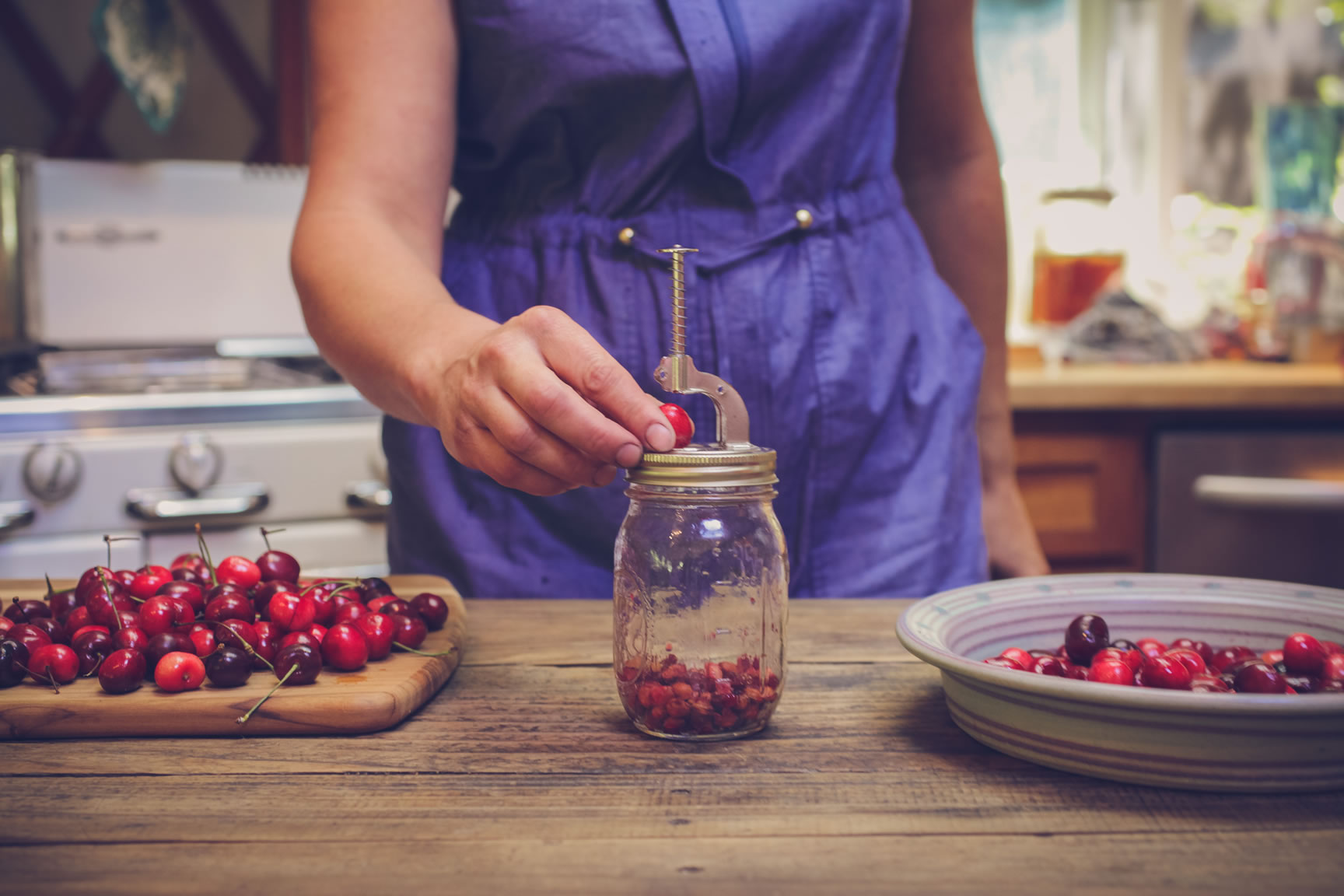
2) Prepare your canning equipment
Prepare jars and lids, and set a water-bath canner on to boil, if you will be canning the cherries.
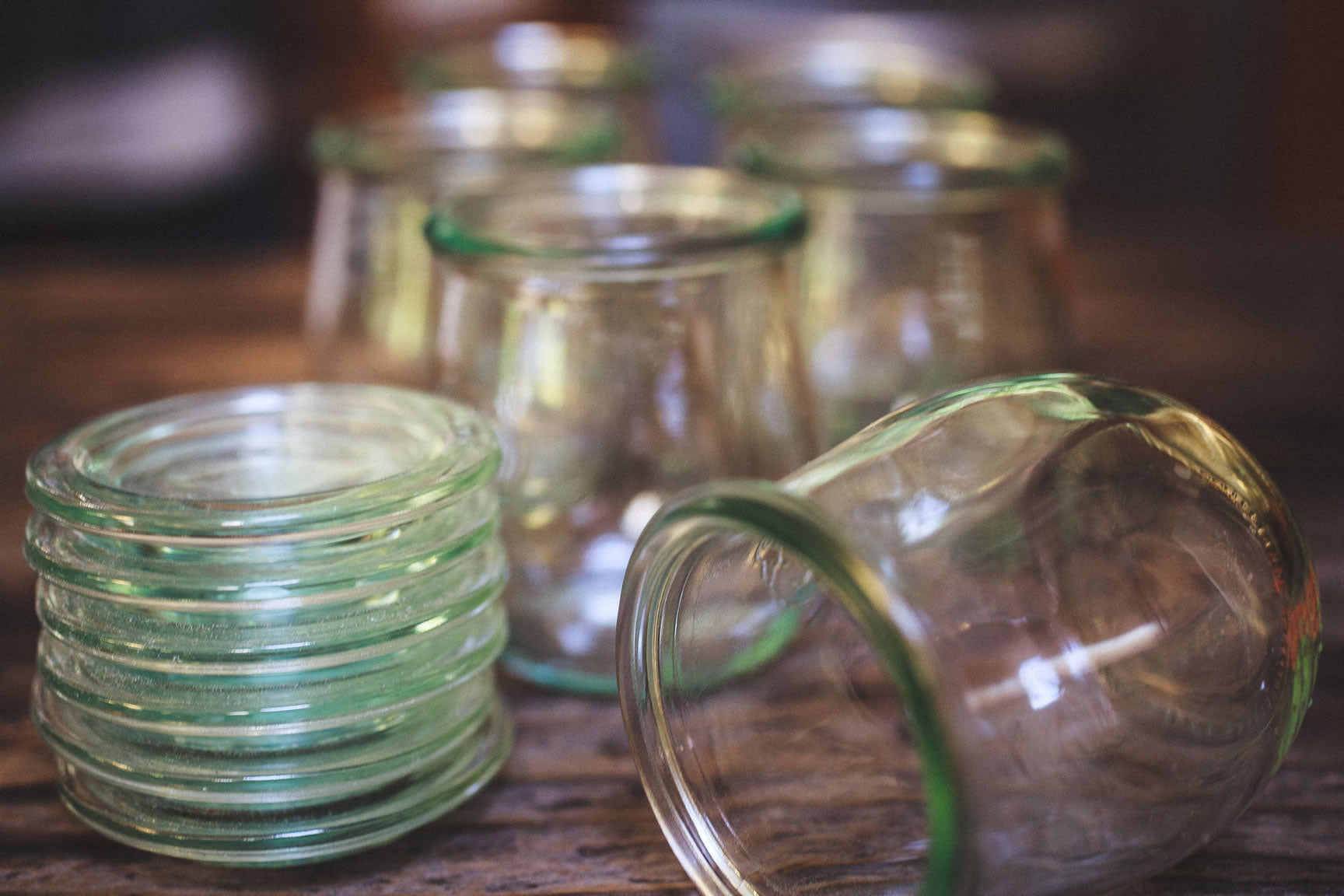
3) Prepare your syrup
Combine the sugar, honey, lemon juice, Amaretto, and water in a large, non-reactive pot.Cook on moderate heat for about 5 minutes, or until the sugar is dissolved.
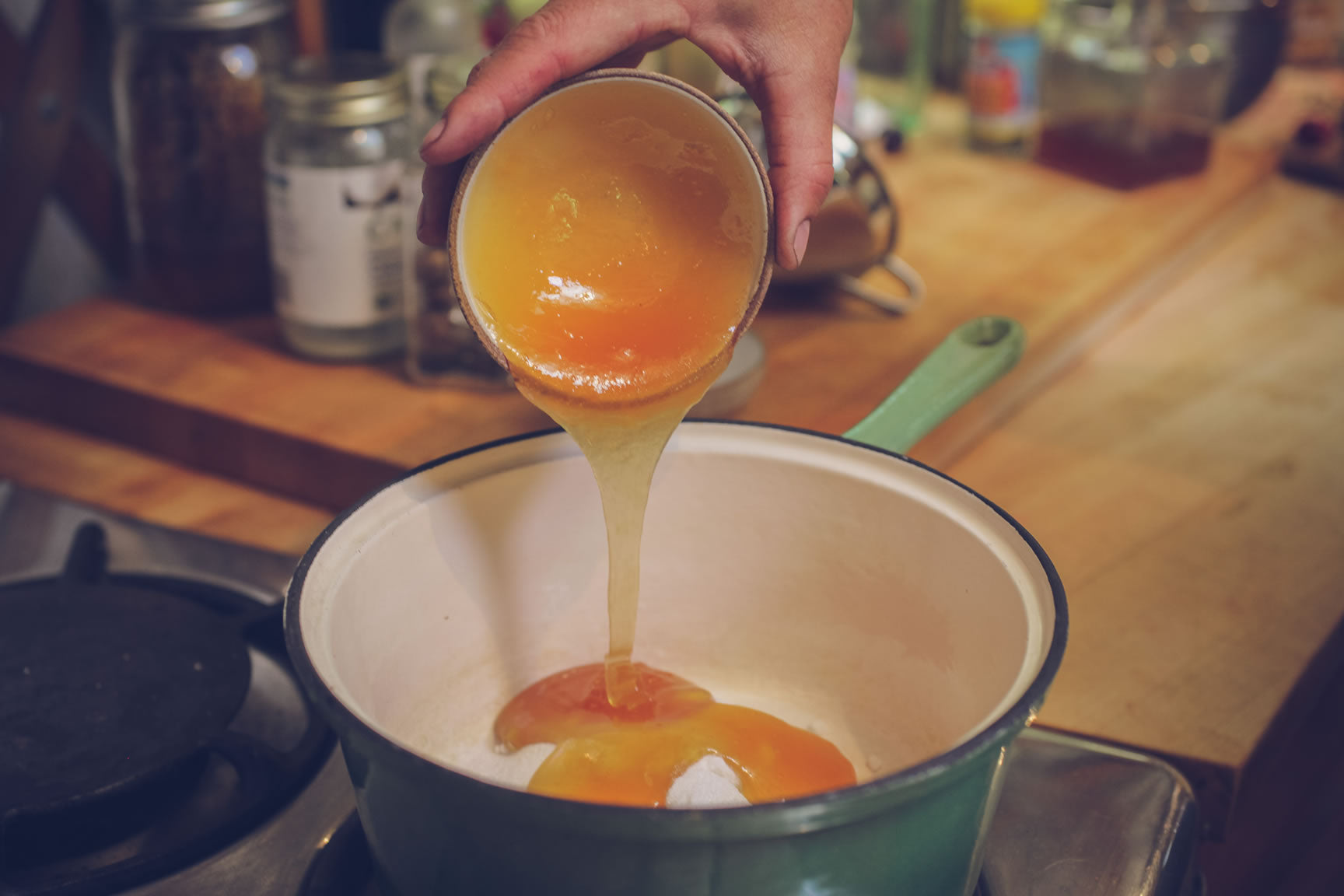
4) Combine syrup and cherries and cook
Reduce the heat and add the pitted cherries. Simmer for about 5 minutes, until the cherries change color and appear slightly plump.Turn the heat off and allow the cherries to rest in the syrup for 5 minutes.
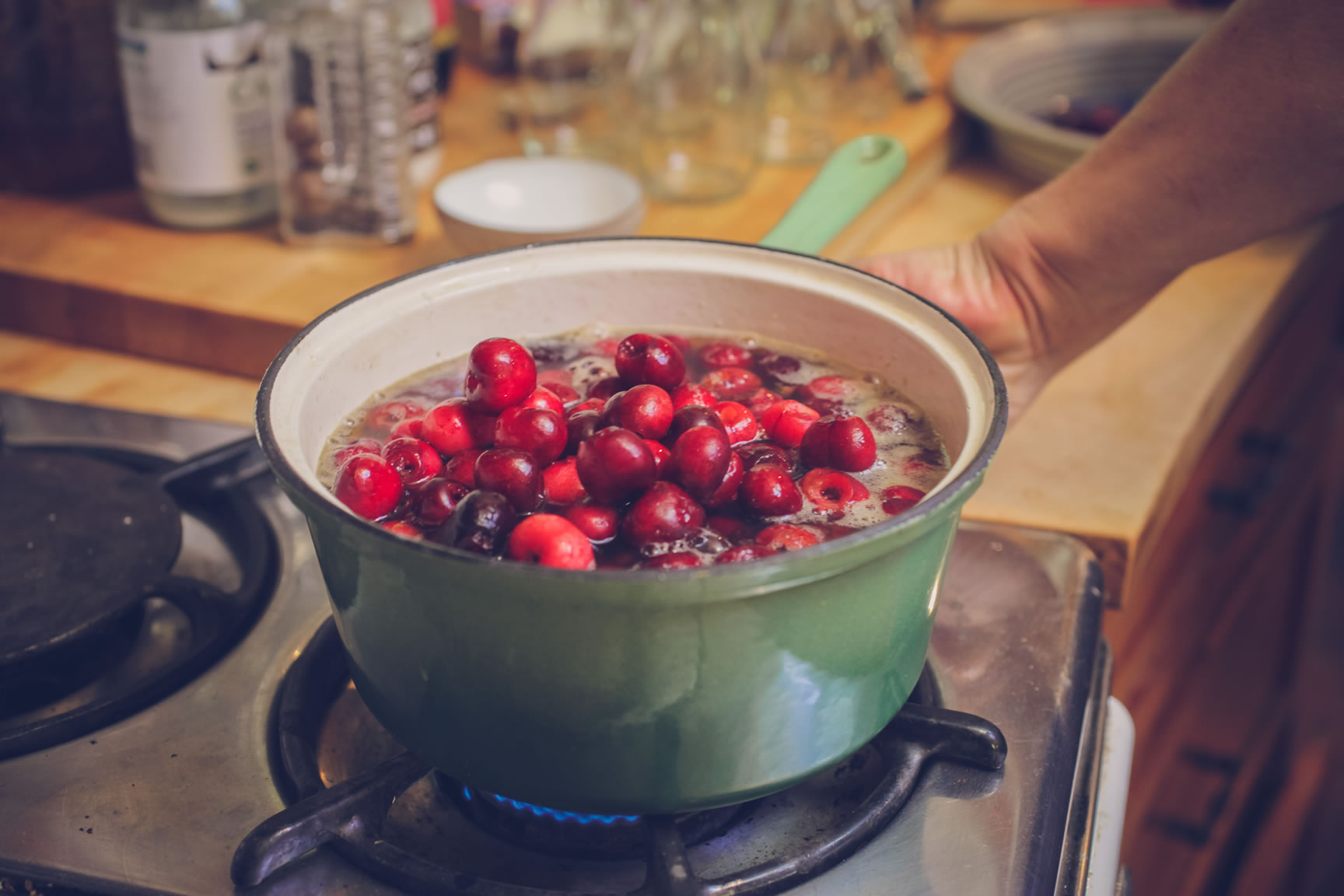
5) Pack your jars and process
If you like, crack some of the discarded cherry pits to reveal the tiny kernel inside of the cherry. Place 1 or 2 kernels in the bottom of each jar, to intensify the almond flavor.
Ladle the cherries into warm, sterile jars, and pour the syrup over them, leaving 1/4” headspace at the top of the jar. Secure the lids and process in a boiling water-bath canner for 10 minutes.
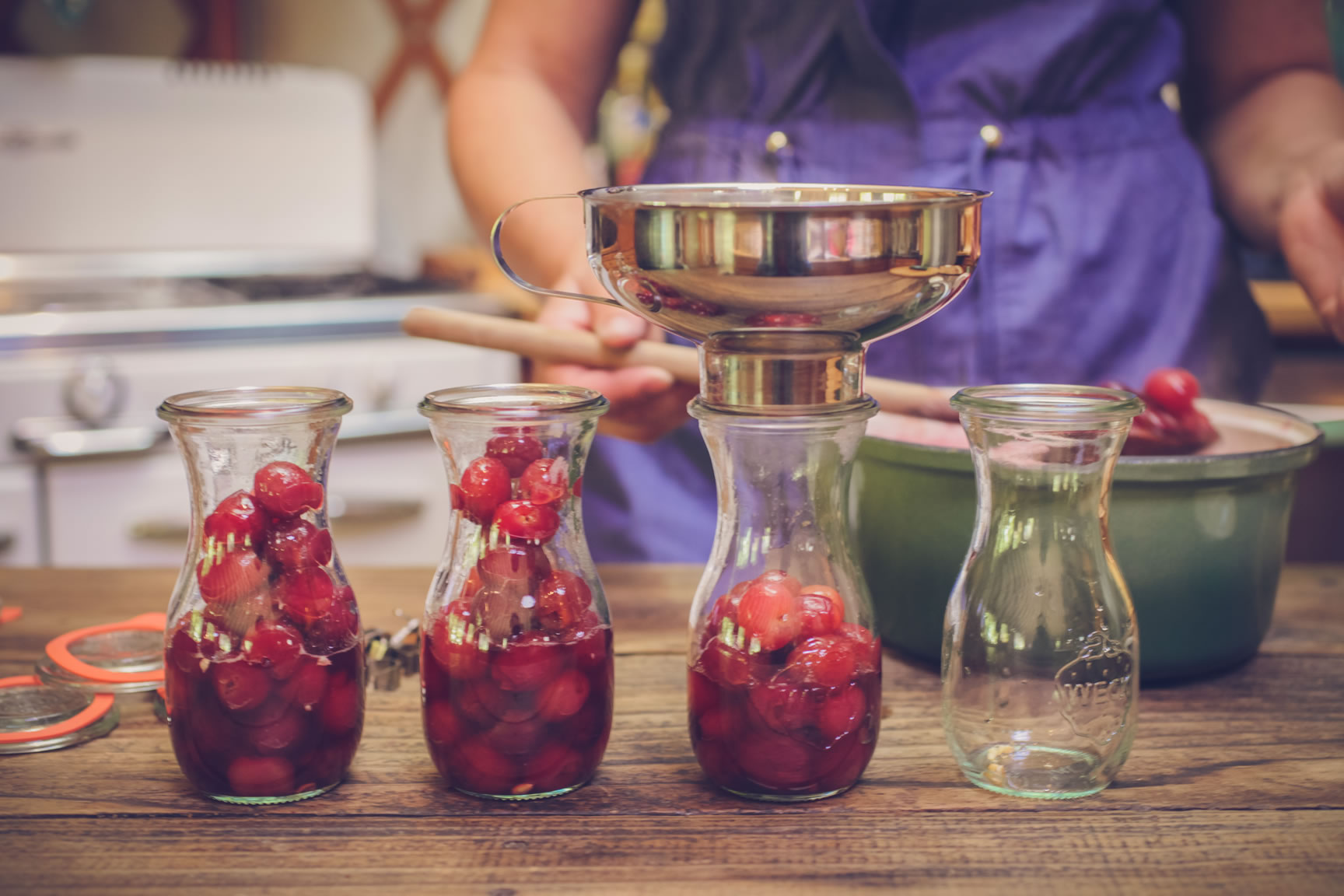
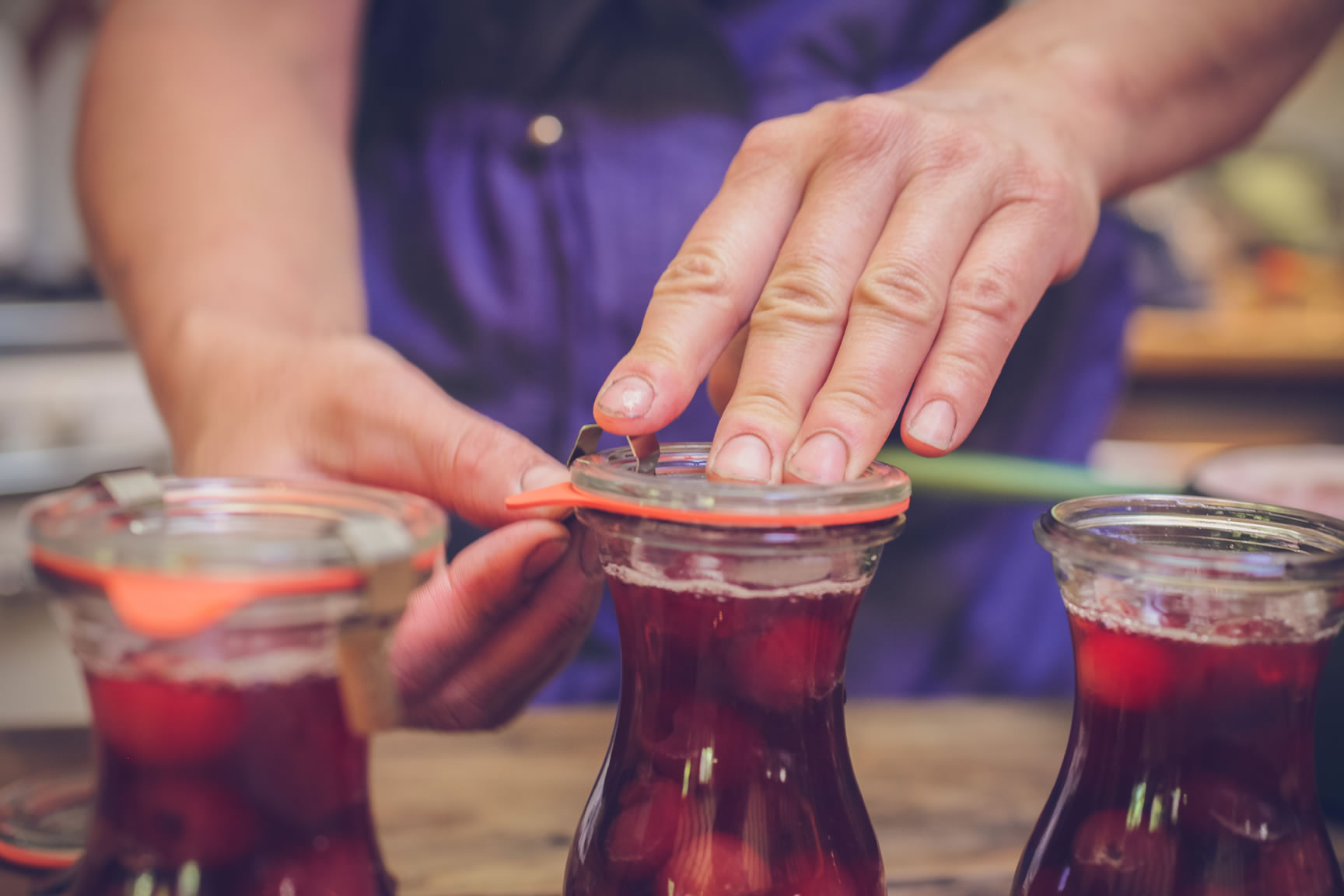
6) Cool and store
Remove the processed jars to a towel on your counter to cool until the lids seal. Refrigerate any jars that do not seal. Store the sealed jars in a cool, dark place for up to 6 months.
If you are not familiar with the water bath canning method watch our water bath canning video workshop. Always make sure you are following all safety guidelines outlined by the USDA when canning anything.
